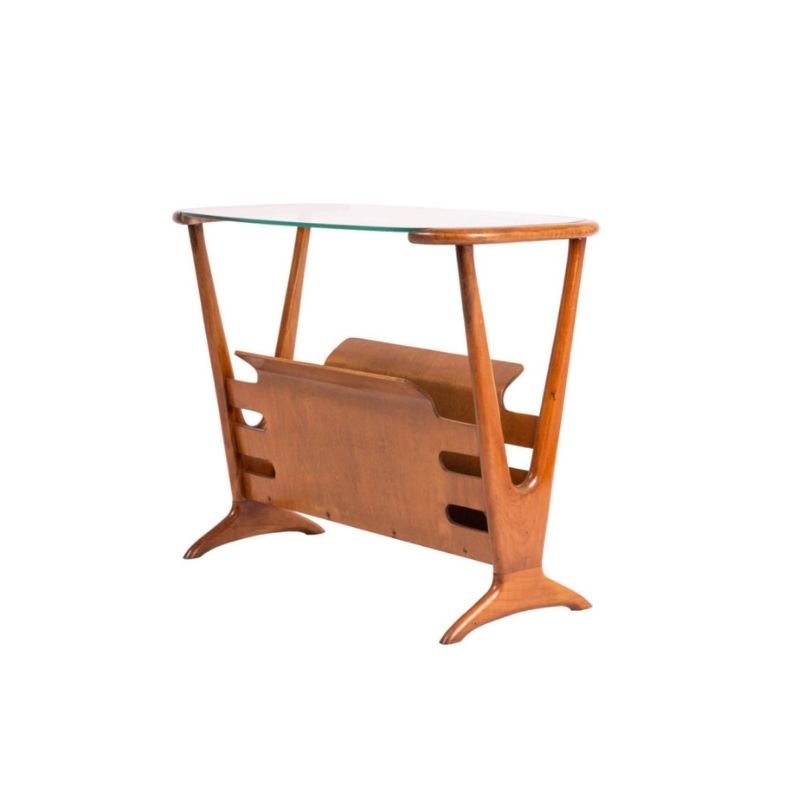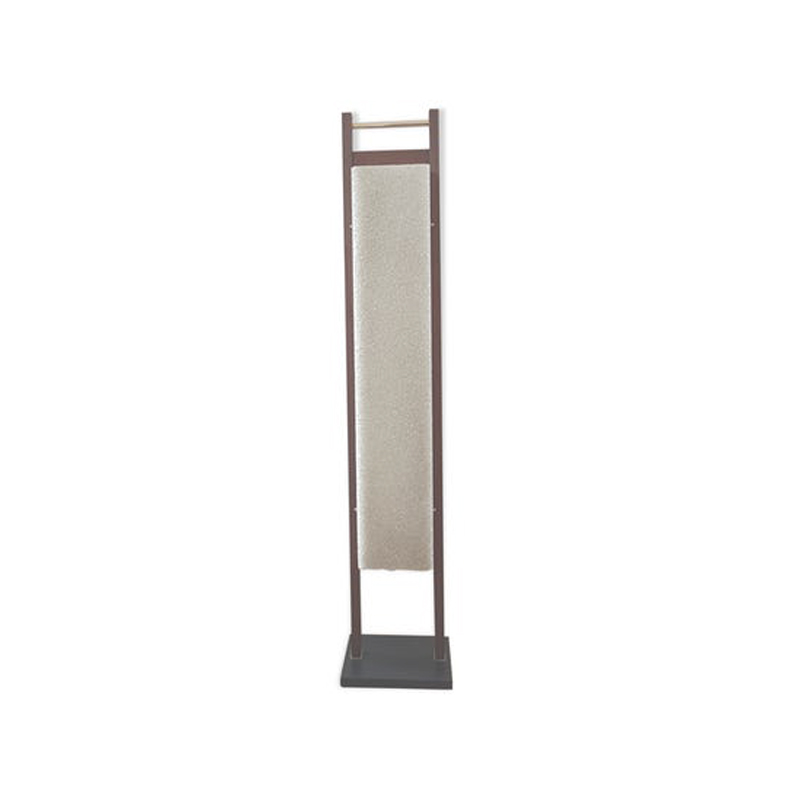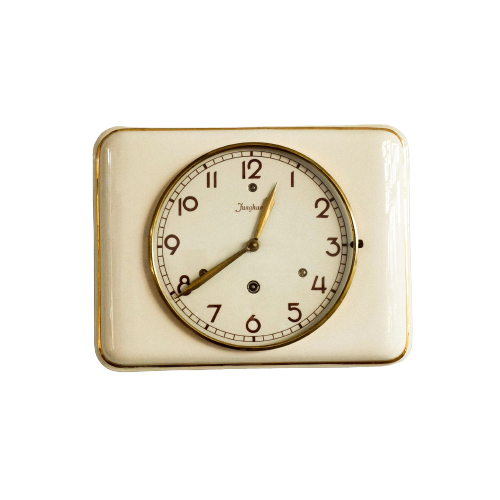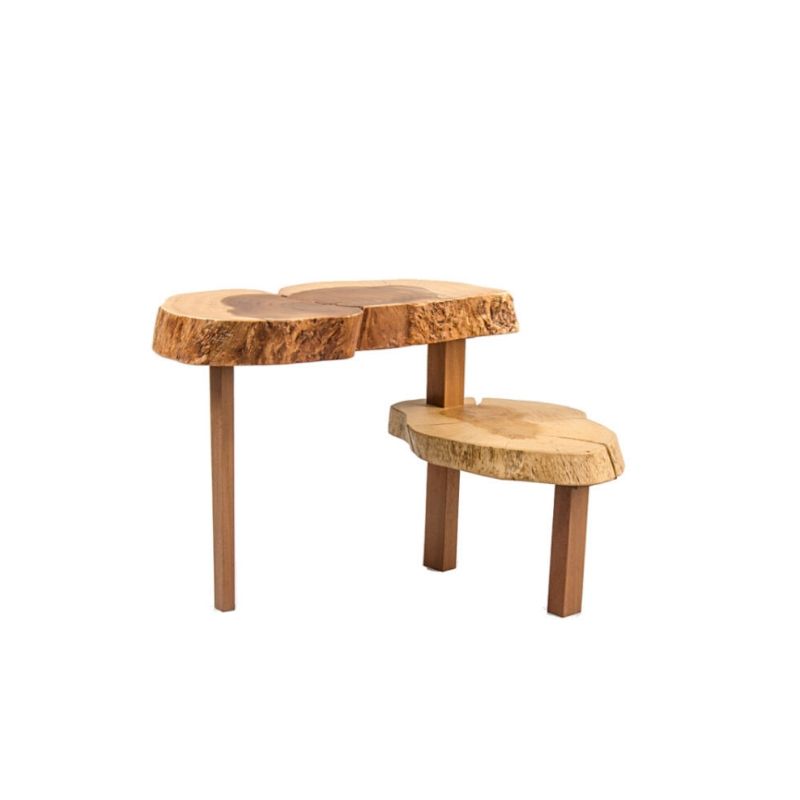First edition thread hereDiscussion continued hereCaleb James' excellent videos on weaving a rush style seat of paper cord: https://www.youtube.com/watch?v=az5fjeRdt3A (that's part 1 of six) Racecar said: I wasn't sure where to start. The caning shop in berkeley is just down the street from work and they have classes, so it's been on my mind to try it. The chord is decent, but I don't think it's original. There's a bunch of cardboard shoved between the two layers. My guess is that it was done by a previous owner to firm up the seat. I'd be surprised if it left the factory that way. The chord is tied together in at least ten different places, which seems kind of sloppy. Good tip about the soap flakes, I'll try it. The pattern on the chair I picked up is different from the chair in the poster (that I got from Carl Hansen & Søn at a design fair in LA). The chord meets at a point in the center on mine (and others I've seen 1st dibs that claimed to be original), but most of them meet with a 'line' in the middle, like the poster. I wasn't sure if it would have been made both ways or if that's a sign that it's been redone. I'll repost your photos for clarity's sake.OK, first--The Caning Shop sells very good quality cord and authentic Danish L nails so I'm inclined to think their classes are probably worthwhile. If you get frustrated trying to do this yourself, that may be a good option--or if it just sounds like too much for a starter project. I did a bunch of the much easier Moller chairs before tackling a rush-style weave in paper cord and even then I had to back away from it for awhile. But that was before Caleb James' videos on youtube, which clued me in to the importance of a few essential things.Anyway! The cardboard between the cord layers is a thing done with fiber rush seats, for "padding"---maybe to give them more the look of authentic rush? I think the seat on your chair was probably redone now that I look at it more closely. The diagonal lines are pretty straight but they're not quite as straight as what you see on an original Wishbone seat, and you're right, the lines should not all meet in the center. It's not a bad job at all, though. The number of knots is legit.There's a video on youtube of a Danish guy named Benny weaving this kind of seat in a Fritz Hansen store in Denmark (I think Fritz Hansen anyway) and he uses very short lengths and just knots as needed. You have to pull the entire strand through the weave at each corner. I load up a shuttle with a ton of cord to start, usually enough to get me to where the opening in the center of the seat is too small to get the shuttle through, which is also close to where you can't use a shuttle anyway because you have to start threading the cord through the slot at the center back. But loading the shuttle takes time.Benny can do an entire seat in 45 minutes---WAY less time than it takes me. But the shuttle keeps the cord from getting tangled so it's worth it to me. I don't like how the knots are placed so close to the center on yours, though. If they're close to the rails, there's more room between them and the top layer of cord and less chance they'll ever poke through.

Here's a seemingly minor thing on rush style weaves that's very easy to miss when you're starting out but that will really screw things up if you skip it. I wish I'd taken photos of my early attempts at this weave because I know it took me awhile to figure out that this was one of stumbling blocks.
When you turn a corner with the cord, especially the back left corner and the right front corner (if weaving counterclockwise, anyway), the underneath strand tends to be shifted a little out of sight under the rest of the weave. This is normal but you have to make sure you catch and force it into place next to its brothers.
This is less of an issue in the other two corners but you should get into the habit of checking it at every corner. I'll show you what happens when it's missed.
The red arrows just show the direction of the weave. The white arrow points to the strand that tends to be out of place.
The first photo shows what that seemingly little error looks like when finished. One or two of these may not be so bad but when you get a lot of them---as shown in the second photo---the weave is not very stable and the whole thing can loosen up with use and turn into a mess. It's a really, really easy thing to miss when you're new to this but it's not hard to avoid if you just pay attention. After awhile you'll get into the habit.

Correctly done, here's what it'll look like. It helps to hold down the top cord as you make the turn with the new one over it, especially with stiffer cord. If you're weaving with 1/4" diameter cord like with the Wegner J16 rocker and some other chairs, this is especially important.


The only tip I can give about doing this weave that really applies to any cord seat is to apply plenty of tension while weaving, and consistent tension. If the cord is pulled consistently tight at every turn then it will naturally bend into crisp 90 degree turn, and you will not have to worry about the diagonal lines wavering from straight.
I know tight is a relative term to read, but when I finish a seat it is springy from the tension, not at all like a hammock, and is much more comfortable for being springy.
I shot a couple of little videos on what this looks like in motion but my server won't let me link to them---BUT this guy on youtube has a perfect view of the exact thing on the fiber rush seat he's doing. I think Caleb James points it out too but I'm not sure he has a really clear view of it.
FFW to 7:12 to see what i'm talking about here:
Leif, that's true---consistent tension is very important! But it's easy on the back corners to start a little off 90 degrees since the side rails are so much higher than the back rail. Picturing a diagonal line from the center of a rear post to the point where the wraps end on the front rail could help but that requires some good visualization skills. And the crisp 90 degree angle is tough with stiffer, heavier cord, even when you really yank on it. But certainly it can be done.
I am still pining for one of those flat clips they use in Denmark. I use a spring clamp but it always lets a little slack out after clamping and then I have to make sure I tighten that last part again before moving on---pain in the neck! I had a stronger spring clamp but traded for this one because it was easier to open with one hand. But maybe I'll get my old one back. The next size up is way too strong and also too huge.
I just looked at your wishbone restoration again---how did you join new strands on the underside? Sure doesn't look like knots!
spanky, Thanks so much for creating this thread and for the detailed tips.
I was surprised to see how Benny ties the chord with so many knots. It's great watching a master work, how he uses his cutters to adjust the chord, and is able to pull it through so quickly. That metal clip does look handy.
This is an excellent video about the wishbone chair in general, with some chord work around 10:30. They seem to use the same technique as Benny.
https://www.youtube.com/watch?v=dJm07V0v6TI
The Caleb James series is great and really thorough. The way he straps the chair down is so simple, and the pre-loading technique with the shuttle is the way I'd try it too. I was really surprised to see the rungs moving as he pulled the chord tight. Wow.
You mentioned cleaning the chord with soap flakes before redoing it. I hope you don't mind me posting this info here. I roughly followed this recipe (2tsp flakes in 1quart water):
http://soap-flakes.com/recipes.html
Here's a semi-related video from Carl Hansen about wishbone chair maintenance:
http://soap-flakes.com/recipes.html
I grated a tablespoon or more of soap flakes in small pot half full of water and heated it until the flakes dissolved. Then I dampened a microfiber cloth and rubbed the whole seat down. I left for work and let it dry.
After the first pass nothing much had happened, but to my surprise the soap mixture turned into a gel. I didn't want to keep wetting the entire seat, so I just spot cleaned it with the soap in its new gel form. This worked, and the microfiber quickly started pulling up the dirt or orange juice or whatever it was. After 5 or 6 passes, most of the discoloration was gone. Be careful not to rub too hard because it will wear the chord slightly.
Now that the chord looks decent, it will be hard to strip it off and start over, especially seeing how tricky it is to do it right. I'll probably enjoy it as is for now, but if the joints loosen up I'll take it all apart for a reglue and the chord has to come off at that point anyway.


Ah, good! I thought a soap treatment might help. I recently used it on a pretty serious looking stain on some chairs that I wanted to sell without having to reweave all the seats. Only one was stained and the cord in general was in great shape wear-wise. The soap treatment lightened the stain enough that they sold pretty quickly. Whew.
Yeah, heating soap does weird things to it. I have had some in a jar for years with water and it's half soft soap and half gel and looks like a real mess. But it's still good.
Leif, i figured out the knot thing--I just happened to start working on an early Carl Hansen wishbone and noticed there were not any visible knots on the underside. So the trick is to place them where they end up in the middle layer of the strands. I've seen lots of original wishbones with very visible knots so this is exciting--I really don't like for them to show because I always think well what if someone's laying on the floor near a chair? They'd see the knots. (I know.)
Spanky: you are exactly right about how I did the knots; they are all in the portion of the cord that ends up sandwiched inside, so they are not visible from the top or the bottom. This is pretty easy early on, as the invisible lengths of cord are pretty long, but towards the end it is almost all visible cord, so I had to place the knots very carefully.
I really enjoy doing the X shaped weave on these chairs. I much prefer it to the Møller basket weave. Is there a proper name for it?
Also, I've never had trouble with starting out of 90 degrees, which usually happens for the first few courses as the cord goes around the legs and such. It always straightens out quickly. I do have to force the cord to stay in place as your images show, especially for the first half dozen or so courses.
I only use a clamp when I am weaving with danish cord when I need to futz with getting more cord. I can always find a place where I can pull it, wrap it around something, and then just hold it tight with one hand while I move the cord to the next place with the other hand. I find that the tension on the cord, counter-intuitively helps with this, as it really grabs against the wood it is wrapped around.
It is also within the realm of possibility that what I mean by well tensioned is beyond the average, as I have strong hands, and I wear a pair of fingerless gloves so that I can really pull on the cord without it tearing up my palms.
You probably have a better eye than I do for angle accuracy. My lines are good, just not perfect, and I am a perfectionist with certain things so it bugs me. But not too bad. I keep remembering my first efforts. Har.
The weave is just called the rush weave or rush style weave as far as I know. People have been making real rush seats since forever. They're so beautiful but it's not something I ever want to get into doing. (I even have access to a ton of cattails but NO THANKS. Paper cord is so much easier.)
I've tried gloves but I dunno...they just kind of get in the way or something. Maybe too many years of sewing and other fine fiber work. I get a bad callous on the outside of my right pinky finger at the end joint which cracks open and hurts and then I Superglue it closed. This works pretty well. But mostly it's joints and tendons that get sore and Aspercreme daily and ice water helps that. Someday I'll have to quit but not yet.
Here's a pic of some gorgeous genuine rush seats. Someone brought a real rush seat--very old---to me recently to redo and i was surprised at how crazy the underside was. There were little cut ends sticking out all along the diagonal seams--like at every strand. It was very neatly done but just so much more rustic than any paper cord seat.
Thankfully the seat was in good shape and I told her to just enjoy it as is!
I think this is the natural thickness of this stuff, and that's why people put pieces of cardboard between the layers when weaving fiber rush (which is very similar to Danish paper cord), otherwise it will be flat like Danish seats.
If you need any help, please contact us at – info@designaddict.com









